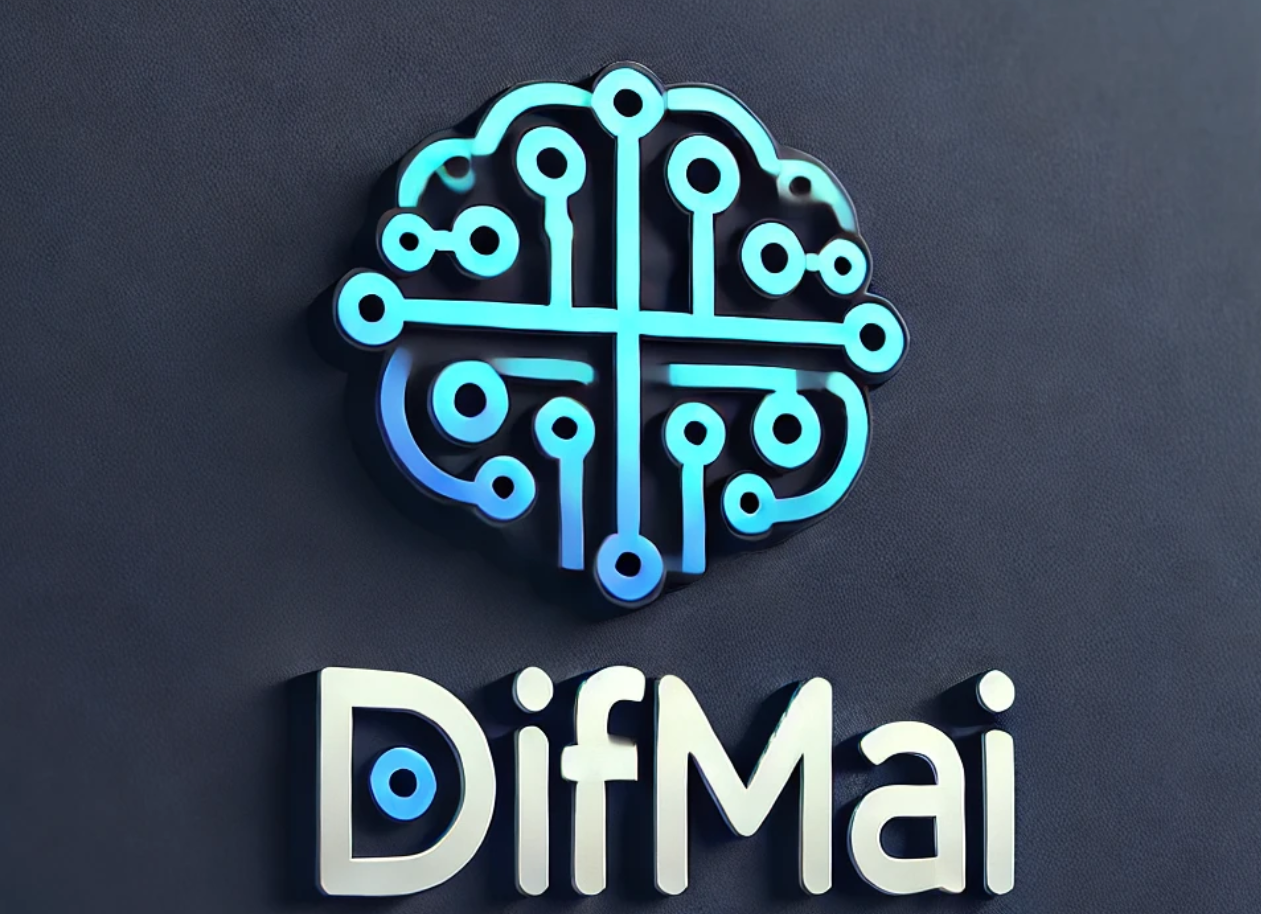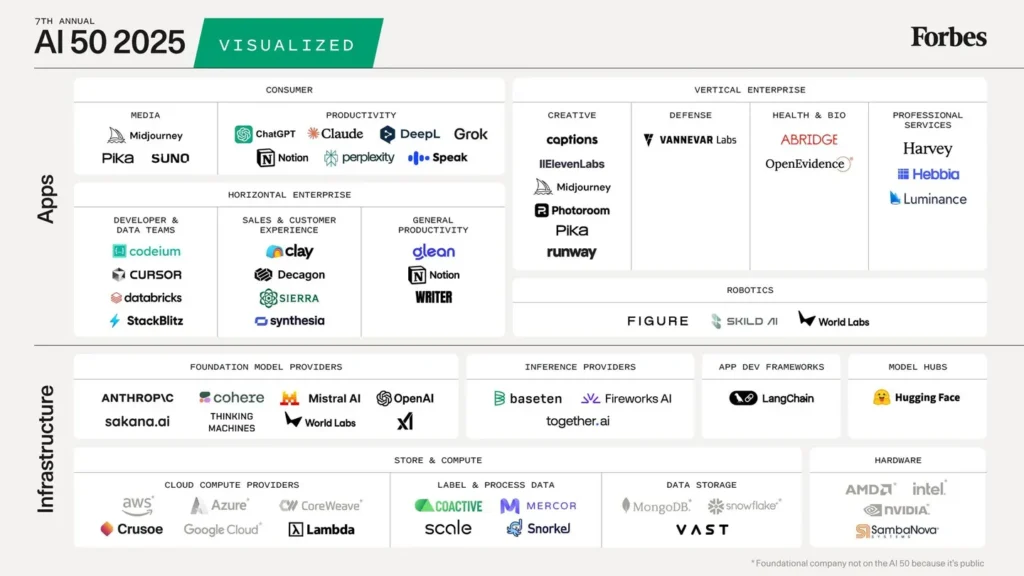TL;DR: The 2025 Forbes AI 50 list signals a pivotal moment for artificial intelligence. AI is graduating from answering questions to executing complex, end-to-end business workflows. Top startups are tackling real-world enterprise challenges in legal, software development, customer service, and more, while breakthroughs in robotics hint at a future of physical AI. 2025 is the year AI truly became an operational co-worker, shifting from mere intelligence to tangible effectiveness.
The Evolution of AI: From Prompt to Productivity, Answer to Action
For years, the public face of AI was often the chatbot or the text generator – tools that could answer questions or create content on command. But the landscape showcased by the 2025 Forbes AI 50 list reveals a profound evolution. AI is no longer just an ‘answer engine’; it’s becoming an ‘action engine’ or a ‘workflow engine’. Enterprises are moving beyond asking “What can AI say?” to demanding “What can AI *do*?”. The leading AI startups of 2025 aren’t just virtual assistants; they are deeply integrated systems capable of solving complex problems and autonomously executing entire business processes, marking a transition from simple prompts to genuine productivity gains.
Enterprise AI Takes the Lead: Automating Core Workflows
This shift is most evident in the enterprise, where AI is being trusted with mission-critical tasks across various sectors.
Legal and Professional Services Transformation
Verticalized AI is demonstrating significant impact. Consider Harvey, the legal AI startup capable of managing end-to-end workflows like drafting contracts, predicting case outcomes, summarizing documents, and handling client communications. Similarly, companies like Luminance (contract analysis), Hebbia (AI-powered research), and OpenEvidence (healthcare/life sciences data analysis) are automating laborious tasks, freeing professionals to focus on high-value strategic work.
Powering Developers, Sales, and Customer Experience
Horizontal enterprise AI applications are also maturing rapidly. Cursor (by Anysphere) empowers developers to build entire software features using natural language prompts. For data teams, platforms like Databricks and StackBlitz offer AI-driven analytics and collaborative coding environments. In sales and customer experience, tools like Clay (outreach automation), Synthesia (AI video generation), and Sierra (AI customer service agents operating 24/7) are revolutionizing interactions, embedding AI as a silent operator driving efficiency and customer satisfaction.
Breakthroughs in Robotics: AI Meets the Physical World
While not yet mainstream, 2025 marks a significant leap for AI in robotics, often termed “physical AI.” Figure AI made waves by unveiling its Helix model, based on a Vision-Language-Action (VLA) framework enabling human-like reasoning, alongside its BotQ facility capable of producing 12,000 humanoid robots annually. Competitor Skild AI is developing the ambitious Skild Brain, aiming for a universal, learning-based AI model compatible with diverse hardware platforms. Nvidia CEO Jensen Huang has highlighted the immense potential, calling industrial robotics a “$50 trillion opportunity.” These advancements signify the beginning of AI integrating deeply with physical systems, pointing towards future applications in manufacturing, logistics, and potentially even homes.
Consumer AI: The Next Frontier in Productivity
Though enterprise tools dominate the 2025 AI 50, the groundwork is being laid for powerful consumer AI applications. Tools like Anthropic’s Claude Code are democratizing software development for non-technical users. Creative AI platforms such as Pika,Suno,and Midjourney continue to push boundaries in media generation. Meanwhile, apps like Grok,Speak,and Notion AI are enhancing personal productivity. Expect 2026 to see the rise of more sophisticated personal AI agents capable of managing calendars, booking travel, and organizing information end-to-end. The growing trust and proven value in enterprise AI are paving the way for broader consumer adoption.
Infrastructure: The Unsung Heroes Powering the Revolution
This AI transformation is built upon a robust foundation. Companies providing large language models and specialized AI models like **Anthropic**, **OpenAI**, **Mistral AI**, **Cohere**, **Sakana AI**, and **xAI** are crucial. Development frameworks and platforms from **LangChain** and **Hugging Face** enable startups to build applications faster. And the massive computational needs are met by cloud providers like **AWS**, **Azure**, and **Google Cloud**, alongside specialized compute innovators like **CoreWeave** and **Lambda**.
Why 2025 Marks a Turning Point for AI Adoption
Several factors converge to make 2025 a landmark year for AI:
- Accuracy and Trust: Companies like Harvey and Sierra demonstrate AI’s capability to handle complex, sensitive workflows reliably, building crucial enterprise trust.
- Scalability: The availability of powerful cloud infrastructure and specialized compute allows for mass deployment of AI solutions.
- Security and Privacy: Startups like **VANNEVAR Labs** (defense/national security) and OpenEvidence are actively addressing data privacy and security concerns, making AI safer for critical applications.
The momentum is clear. The companies on the 2025 Forbes AI 50 list show that AI is moving beyond experimentation. It’s not just generating content; it’s generating tangible outcomes and operational value. The transition from “chat” to “action” solidifies AI’s role as an indispensable tool for the future. In short, AI in 2025 is no longer just intelligent. It’s profoundly effective.
FAQ: AI 50 2025 Essentials
Q: What industries benefit most from AI agents?
A: Legal, healthcare, software development, and customer service.
Q: How is robotics AI different from chatbots?
A: It integrates transformers with physical hardware (e.g., Figure’s Helix model).
Q: When will consumer AI go mainstream?
A: 2026, driven by workplace AI’s proven value.
Source
Related


